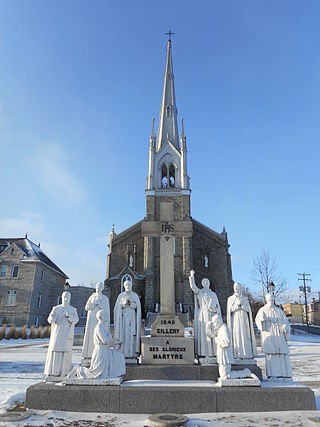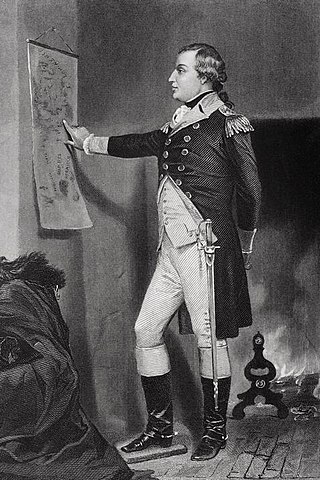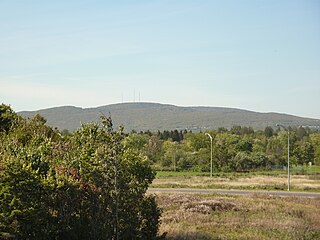24 Sights in Quebec, Canada (with Map and Images)
Legend
Premium Sights
Book tickets, guided tours and activities in Quebec.
Guided Free Walking Tours
Book free guided walking tours in Quebec.
Welcome to your journey through the most beautiful sights in Quebec, Canada! Whether you want to discover the city's historical treasures or experience its modern highlights, you'll find everything your heart desires here. Be inspired by our selection and plan your unforgettable adventure in Quebec. Dive into the diversity of this fascinating city and discover everything it has to offer.
Sightseeing Tours in QuebecActivities in Quebec1. José Martí
José Julián Martí Pérez was a Cuban nationalist, poet, philosopher, essayist, journalist, translator, professor, and publisher, who is considered a Cuban national hero because of his role in the liberation of his country from Spain. He was also an important figure in Latin American literature. He was very politically active and is considered an important philosopher and political theorist. Through his writings and political activity, he became a symbol of Cuba's bid for independence from the Spanish Empire in the 19th century, and is referred to as the "Apostle of Cuban Independence". From adolescence on, he dedicated his life to the promotion of liberty, political independence for Cuba, and intellectual independence for all Spanish Americans; his death was used as a cry for Cuban independence from Spain by both the Cuban revolutionaries and those Cubans previously reluctant to start a revolt.
2. George-Étienne Cartier
Sir George-Étienne Cartier, 1st Baronet, was a Canadian statesman and Father of Confederation. The English spelling of the name—George, instead of Georges, the usual French spelling—is explained by his having been named in honour of King George III.
3. Memorial to fallen American soldiers
Richard Montgomery was an Irish-born American military officer who first served in the British Army. He later became a major general in the Continental Army during the American Revolutionary War, and he is most famous for leading the unsuccessful 1775 invasion of northeastern Quebec.
4. Cathedral Basilica of Our Lady of Quebec City
The Cathedral-Basilica of Notre-Dame de Québec, located at 16, rue de Buade, Quebec City, Quebec, is the primatial church of the Roman Catholic Archdiocese of Quebec. It is the oldest church in Canada and was the first church in Canada to be elevated to the rank of minor basilica, by Pope Pius IX in 1874. Four governors of New France and the bishops of Quebec are buried in the crypt, including François de Laval, Quebec's first bishop.
5. Juan Montalvo
Juan María Montalvo Fiallos was an Ecuadorian essayist and novelist. His writing was strongly marked by anti-clericalism and opposition to presidents Gabriel García Moreno and Ignacio de Veintemilla. He was the publisher of the magazine El Cosmopolita. One of his best-known books is Las Catilinarias, published in 1880. His essays include Siete tratados (1882) and Geometría Moral. He also wrote a sequel to Don Quixote de la Mancha, called Capítulos que se le olvidaron a Cervantes. He was admired by writers, essayists, intellectuals such as Jorge Luis Borges and Miguel de Unamuno. He died in Paris in 1889. His body was embalmed and is exhibited in a mausoleum in his hometown of Ambato.
6. Aquarium of Quebec

Aquarium du Québec is a public aquarium located in the former city of Sainte-Foy in Quebec City, Quebec, Canada. The 16-hectare (40-acre) facility is home to more than 10,000 animals representing more than 300 species. It is operated by Société des établissements de plein air du Québec (Sépaq), and is a member of the Canadian Association of Zoos and Aquariums (CAZA).
7. Palais Montcalm
The Palais Montcalm is a concert hall in Quebec City located in the borough of La Cité-Limoilou, at Place D'Youville. The building includes a concert hall, a rehearsal room, and a cabaret-style hall currently under construction. All of the building's activities are managed by a non-profit organization, the Palais Montcalm-Maison de la musique.
8. Holy Trinity Cathedral
The Cathedral of the Holy Trinity is the cathedral of the Anglican Diocese of Quebec. It is home to two parishes: the Parish of Quebec and la Paroisse de Tous les Saints. It stands on the western side of Quebec City's Place d'Armes.
9. Musée de la Civilisation de Québec

The Musée de la civilisation, often directly translated in English-language media outside Quebec as the Museum of Civilization, is a museum located in Quebec City, Quebec, Canada. It is situated in the historic Old Quebec area near the Saint Lawrence River. It was designed by architect Moshe Safdie, and opened its doors to the public on 19 October 1988.
10. Bois-de-Coulonge Park
Quebec's Government House, known as Spencer Wood, was the viceregal residence of Quebec. It was built in 1854. Located at Bois-de-Coulonge Park in Sillery, it was purchased by the Quebec government in 1870, and served as the residence of Quebec lieutenant governors until 1966, when a major fire destroyed the main residence.
11. Grand Théâtre de Québec
The Grand Théâtre de Québec is a performing arts complex in Quebec City, Quebec, Canada. It was conceived to commemorate the Canadian Centennial of 1967 and the Quebec Conference, 1864, one of the key meetings leading to the Canadian Confederation of 1867.
12. Domaine Cataraqui

Domaine Cataraqui is a historic property and garden located in Quebec City in the Sillery district. It belongs to the Commission de la capitale nationale du Québec, which is responsible for showcasing the attributes of the capital.
Wikipedia: Domaine Cataraqui (FR), Facebook, Instagram, Foursquare
13. Le Diamant
Le Diamant Theatre is a large-scale performing arts venue in the center of Québec City, Québec, Canada. Coarchitecture, In Situ, Jacques Plante Architects, OPI, Trizart Alliance, and Tetra Tech were chosen as the project's primary architects and structural designers to meet Quebec City's expanding needs for leisure, entertainment, and urban development. Le Diamant unifies traditional and modern architecture with the use of glass and asymmetrical design. The theater is located at the intersection of Rue des Glacis and Rue Saint-Jean, across from the historic square, Place D'Youville, in Quebec City's Saint-Roch neighborhood. Le Diamant Theatre was built over the course of three years by the Canadian construction company Pomerleau Inc., and it opened its doors in June 2019. Le Diamant Theatre was constructed for a total cost of $54 million, with an additional $10 million from the Quebec government, and the remaining money coming from private funding. New meeting rooms, offices, parking facilities, and a link between the upper and lower towns were all built as part of the project.
14. Chapelle des Jésuites
The Jesuit Chapel is a chapel of the Society of Jesus located in the Old Quebec neighbourhood of Quebec City, Quebec, Canada. It was designed by François Baillairgé and built in from 1818 to 1930. It is situated on Rue Dauphine in Old Quebec close to the ramparts of Quebec City.
15. Parc Montmorency

Parc Montmorency is a park located in Quebec City and home to Parliaments of Lower Canada, Canada East and Quebec from 1791 to 1883. It is named for Henri II, Duke of Montmorency, the viceroy of New France, 1619–1625, under the French king, Louis XIII.
16. Cartier-Brébeuf National Historic Site
Cartier-Brébeuf National Historic Site is a National Historic Site of Canada and so designated by the Historic Sites and Monuments board of Canada in 1958 under the recommendation of John Diefenbaker, the Prime Minister of Canada at the time. It is administered by Parks Canada and located at the confluence of Saint-Charles and Lairet rivers, in Quebec City, Quebec, Canada, more precisely in La Cité-Limoilou borough. On the site you can find an interpretation centre and a 6,8 hectares inner-city park characterised by an uneven landscape and divided into two sectors "East" and "West" separated by the Lairet river. Several commemorative monuments and elements are also present.
Wikipedia: Cartier-Brébeuf National Historic Site (EN), Website
17. Mont Bélair
Mount Bélair is a peak in the Laurentian Mountains, Quebec, Canada, with an altitude of 485 m (1,591 ft). It is located in the Val-Bélair section of Quebec City, approximately 24 km (15 mi) west of downtown.
18. Parc Saint-Matthew
The Saint-Matthew Cemetery is the oldest Protestant cemetery in Quebec. Opened in 1772, it is located in the Saint-Jean-Baptiste district of Quebec City. The place is also designated Saint-Matthew Park since its desecration.
19. Maison Krieghoff
The Cornelius-Krieghoff House is a neoclassical style country cottage located at 115 Grande Allée Ouest in Quebec City (Canada). This house was built between 1849 and 1850 for plasterer Daniel Rae. It was inhabited between 1859 and 1860 by the painter Cornelius Krieghoff, years in which he painted some of his most famous paintings. In 1863, it was acquired by the Ladies Protestant Home, who occupied it for more than 100 years. It was classified as a heritage building in 1975.
20. Saint Michael's Church of Sillery

St. Michel de Sillery Church is a Roman Catholic parish church in Sillery, Quebec City. It is situated between Quebec Route 136 to the south and the College of Jesus and Mary of Sillery to the north, and is part of the Sillery Heritage Site in the borough of Sainte-Foy–Sillery–Cap-Rouge. Although the current church was built in 1852, and originally dedicated to the Irish Saint Columba, the parish was founded in 1644, with a chapel constructed on the same site by the Jesuits.
21. Lieu historique national des Forts-et-Châteaux-Saint-Louis
The Château Saint-Louis was a building in the Upper Town of Quebec, located on the current site of the Dufferin Terrace, near the Château Frontenac, on the top of the cliff of Cap Diamant overlooking the lower town of Quebec. The site includes archaeological remains from major construction campaigns between 1620 and 1834, including the four Saint-Louis forts, the two Saint-Louis castles and the Haldimand castle, as well as secondary buildings, landscape features and services, such as courtyards, drainage systems and military works.
22. Notre-Dame-des-Victoires
The Notre-Dame-des-Victoires Church in Quebec City owes its name to the resounding victory of the French and Canadians of the time over the English Major-General Phips who attacked Quebec City in 1691 and another victory over the English in 1711. It is the oldest church in Quebec and Canada. Located on Place Royale in Old Quebec, it is built on the remains of Champlain's second home.
23. Le Capitole
The Théâtre Capitole, also known as the Capitole de Québec, is a performance hall located in the historic district of Old Quebec, on Place D'Youville in Quebec City. The Capitole Theatre was designated a historic monument in 1984 and designated a National Historic Site of Canada in 1986.
24. Roosevelt and Churchill busts
The First Quebec Conference, codenamed Quadrant, was a highly secret military conference held during World War II by the governments of the United Kingdom, Canada, and the United States. It took place in Quebec City on August 17–24, 1943, at both the Citadelle and the Château Frontenac. The chief representatives were Winston Churchill and Franklin D. Roosevelt, hosted by the Canadian prime minister William Lyon Mackenzie King.
Share
Disclaimer Please be aware of your surroundings and do not enter private property. We are not liable for any damages that occur during the tours.


















